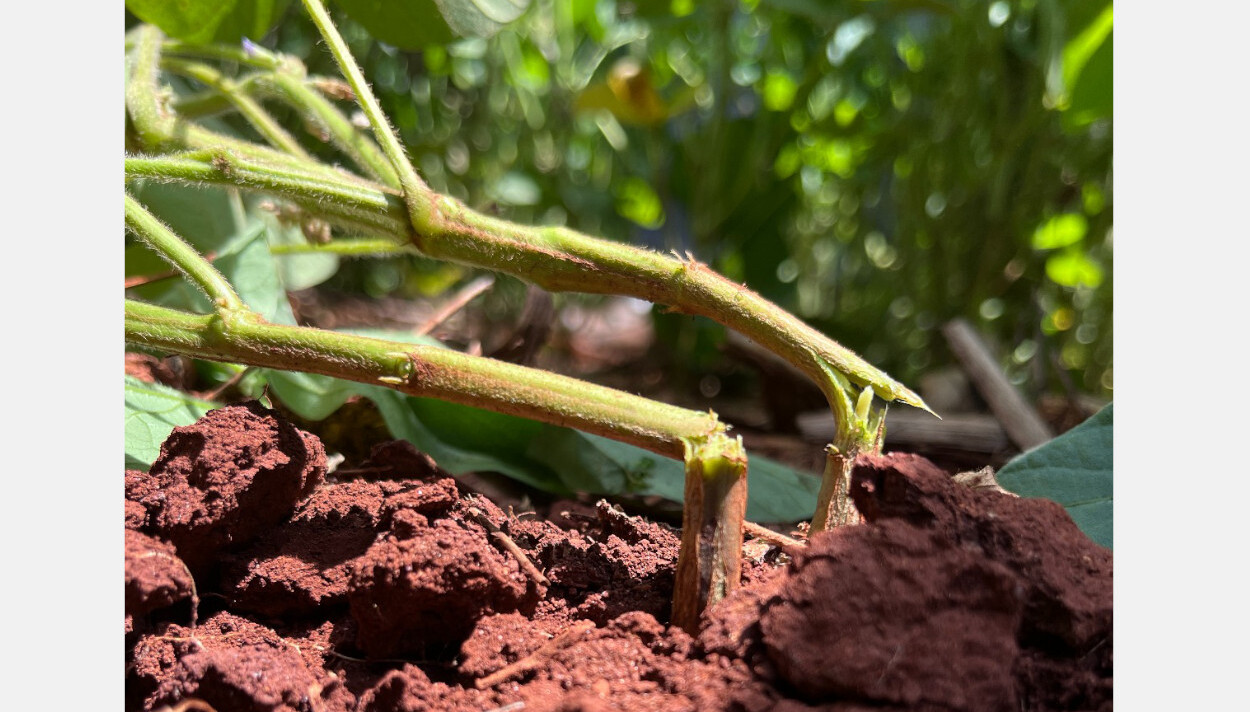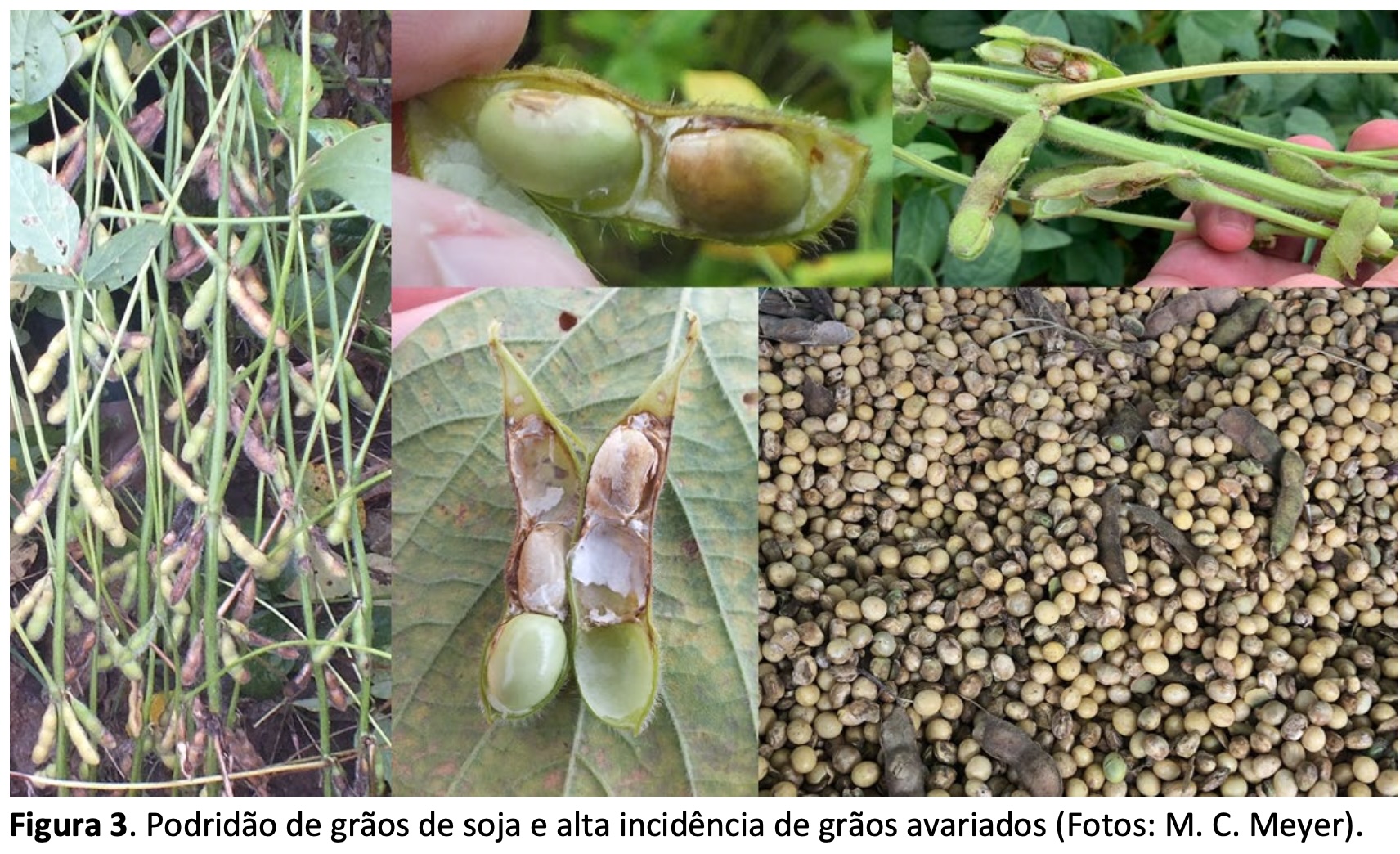Mosaic Fertilizers opens vacancies for the Palmeirante (TO) Mixing Unit
In total, there are 18 job openings scheduled to begin in June this year; The project is still in progress

Problems in soybean production such as stem breakage and grain rot have raised significant concerns among farmers in Paraná. In response to these questions, Embrapa Soja, in collaboration with the Agricultural Defense Agency of Paraná (Adapar), the Union and Organization of Cooperatives of the State of Paraná (Ocepar) and technicians from cooperatives in Paraná, held a crucial meeting to discuss the impacts of these problems in the 2023/2024 harvest.
During the meeting, it was agreed that the participating entities will carry out joint trials in the 2024/2025 harvest. These tests will follow a unique and rigorous protocol, with the aim of collecting accurate data on the behavior of different soybean cultivars in relation to the identified problems and their underlying causes.
Rod breakage, a problem reported with greater intensity in the Vale do Ivaí region, especially in low altitude areas (below 500 meters), was the main focus of the meeting. According to data from cooperatives, this condition was observed in municipalities such as Marumbi, Kaloré, Borrazópolis, São João do Ivaí and São Pedro do Ivaí, with more significant incidences from December 2023. The Technical Note published by Embrapa Soja in February 02, 2024 clarifies that, although stem breakage is evident, there is no direct and systematic correlation with the occurrence of grain rot.
On the other hand, grain rot has been a more recurrent problem in other regions, such as the mid-north of Mato Grosso and Rondônia, with variations in severity between crops and cultivars.
"The occurrences of stem breakage and grain rot in soybean crops have been reported more frequently in recent years, with grain rot occurring since the 2018/2019 harvest in the mid-north region of Mato Grosso and Rondônia, while breakage stem since 2020/2021, also in this region of Mato Grosso, as well as in the states of Paraná and Santa Catarina in the 2023/2024 harvest.
Soybean stem breakage
Soybean stem breakage is a recurrent problem in the crop, reported and studied for more than three decades in Brazil, whose conclusions on possible causes fall on the interaction of the genetic sensitivity of cultivars and environmental stress (Arantes; Melo, 1994; Corrêa- Ferreira et al., 2006).

Soybean stem breakage generally occurs from the pre-closing period between the sowing rows, and can only be seen after the beginning of grain formation. It is characterized by the greater fragility of the plant's support at the base of the stem, close to the cotyledonary node (Figure 1). This fragility favors the breaking of the stems due to wind. Affected plants, with slight lateral pressure, crack when broken. Broken plants can remain with their aerial part alive and green, being able to complete the formation of grains, but they pose difficulties for the harvesting operation, due to their position lying on the ground. In conditions of lack of rain and high temperatures, the broken plants dry out prematurely and the grain filling is not completed. Broken plants commonly have a greater number of hollow pods, with grain filling interrupted. In the region of the break, necrotic striations can be observed in the peripheral part of the woody tissue of the stems (Figure 2), but the same striations can be found in upper regions of the plants and in plants without breakage.

The possible involvement of phytopathogenic fungi and/or other biotic and abiotic factors, causing or enhancing stem breakage, is still being studied by Embrapa and other institutions.
Soybean grain rot
Grain rot is observed from the beginning of grain filling. Externally, the pods may show symptoms of waterlogging and/or darkening, with no visible opening and, internally, they show rotting of the grains (Figure 3). The presence of pods with symptoms and rotten grains occurs randomly on the plant and in the pod, respectively, not necessarily affecting all grains (Figure 3). Consequently, the incidence of grain rot increases the presence of damaged grains, depreciating the quality of the harvested product. The fungi that predominate in isolates from grains and pods (with and without symptoms) are different species of Diaporthe, Fusarium, Colletotrichum and, in some harvests, a high incidence of purple spot on grains was also observed, caused by cercospora spp. (Kudlawiec et al., 2023). These and other fungi can be found latently in the plant and grains, as endophytes, without causing apparent symptoms (Sinclair, 1991), each associated with a disease when symptoms occur.

The symptoms of grain rot observed in Brazilian crops are similar to those caused by the Diaporthe spp., described in 1920 in the United States (Lehman, 1923). Diaporthe species are associated with a number of soybean diseases, including kernel rot, stem and pod dryness, and stem canker, and lead to considerable production losses worldwide.
Grain rot is favored by hot and humid climatic conditions, especially from pod filling (R5) to physiological maturity (R8). The main control of grain rot is through the selection of less susceptible cultivars. Fungicides can be used to reduce the incidence (Kudlawiec et al., 2023).
Exposing plants to high temperature conditions (above 30 ºC) during the grain filling phase can cause deterioration and high levels of grain wrinkling (França-Neto et al., 1993). This wrinkling is normally more intense under water deficit, but can also occur under normal conditions of water availability. Wrinkling drastically affects the quality of grains and seeds and leads to secondary infection by Diaporthe spp., which can lead to rotting of pods, especially in situations of frequent pre-harvest rain. It is known that the grain wrinkle character has great genetic influence. It is assumed that the cultivars that are presenting this problem may be more susceptible to its expression, an aspect that deserves to be evaluated by research.
Relationship between problems
There is still not enough data to prove the relationship between soybean stem breakage and grain rot. Cultivars more sensitive to stem breakage and less susceptible to grain rot and vice versa have already been observed in the field, as well as cultivars sensitive to both problems."
The text above (in italics) was signed by researchers Maurício C. Meyer, Claudia V. Godoy, Francismar C. Marcelino-Guimarães, Claudine DS Seixas, Rafael M. Soares, Edison Ulisses Ramos Junior, José de Barros França-Neto, Francisco C. Krzyzanowski (Embrapa Soja); Dulânndula Silva Miguel Wruck (Embrapa Agrossilvopastoril); and Austeclínio Lopes de Farias Neto (Embrapa Cerrados).
Revista Cultivar published articles on the subject. They can be read, for example, in the following editions:

Receive the latest agriculture news by email
In total, there are 18 job openings scheduled to begin in June this year; The project is still in progress
With more than 420 thousand properties regularized in 2023, the State Government is campaigning to speed up the verification of another 260 thousand pending registrations